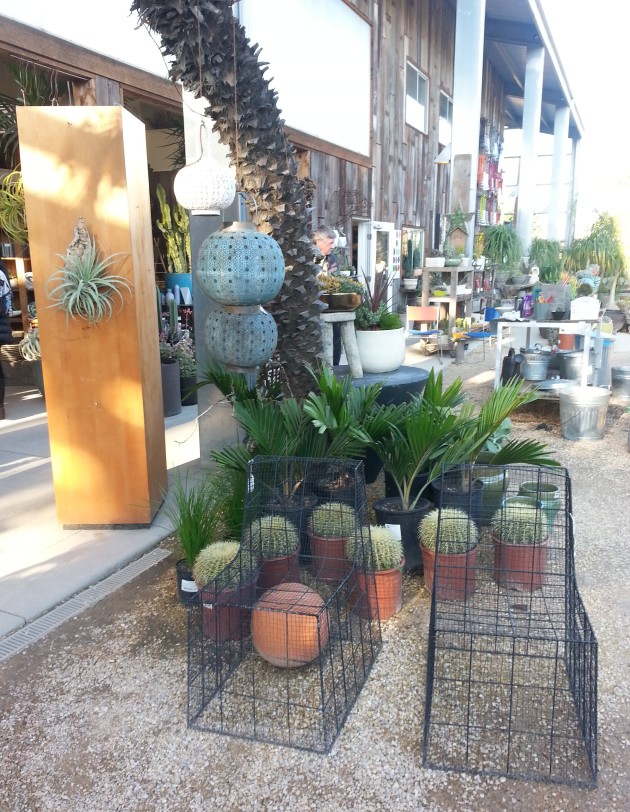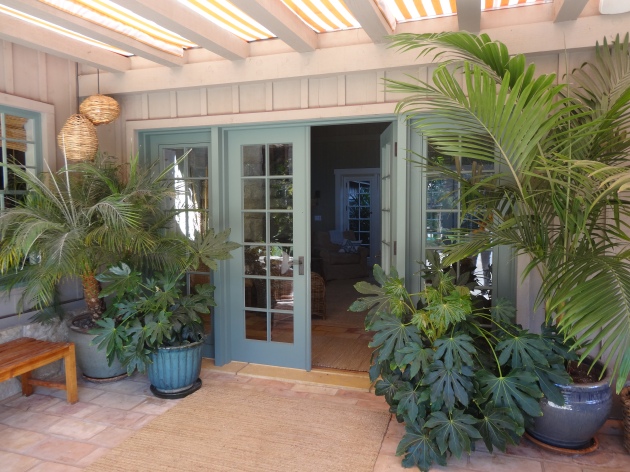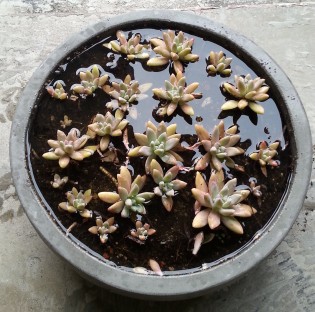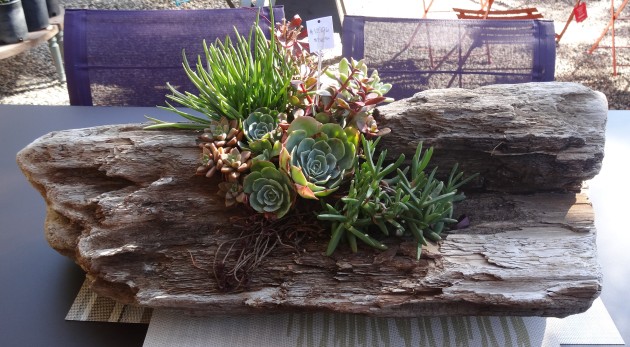I spotted this beautiful succulent dish garden a few months back at Flora Grubb Gardens (they also offer classes if you want to make your own).
Unfortunately, we are still in the grip of this terrible drought. I didn’t plant anything new this fall, because a lot of the poor plants I planted the previous fall didn’t make it through the summer heat without enough winter rain to get them established. Suffice it to say most of my gardening this year will be succulents in containers.
1. The container:
Two of the best places I’ve seen for containers are Flora Grubb and The Botanist in Los Altos, Ca. Online, I’ve found gorgeous ones at: West Elm, Pottery Barn, Crate and Barrel, and Anthropologie. Terrain has wonderful things as well but they are just too expensive for me.
You can drill a drainage hole in the bottom or put a layer of small rocks or pea gravel on the bottom.
2. The potting soil:
Honestly, I just use whatever potting soil is cheapest. If you live in an area where you get a lot of rain, you should go with a cactus or succulent mix or save money and make your own with 3 parts potting soil, 2 parts sand and 1 part perlite, all of which you can get at your local nursery, Lowes, Home Depot, OSH, etc…
3. The plants:
You can see this container uses the Thriller, Filler, and Spiller method. I’m guessing the Thriller is Echeveria ‘Perle Von Nurnberg.’ Mix in some clusters of not more than four kinds of smaller echeveria. Make sure to vary color and texture: green, purple, silver, spiky leaves, fuzzy leaves, rounded leaves. Tuck some small sedums in two or three places around the edges where they can spill over.
Pack the dish or container completely full so that you don’t see any dirt. Succulents slow growers and ridiculously easy to repot when they multiply or outgrow their space. With these plants what you see is mostly what you get, so I like to move them around and arrange them in my nursery cart until I’m happy with my composition.
4. Care:
Succulents grow beautifully in full sun, part sun, and bright shade. Water once a week, less in cooler weather. You can feed them if you want, but you don’t need to. When they multiply you can snap off the babies and repot them. If the stems get too long, pull them up, snap them off close to the rosette, and stick them right back in the dirt.


















